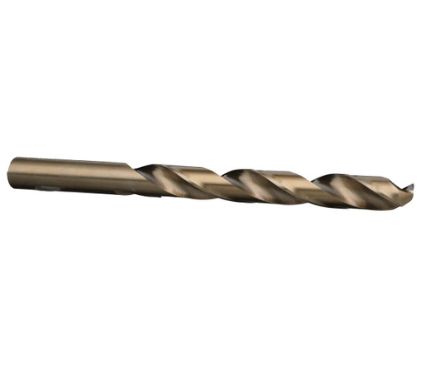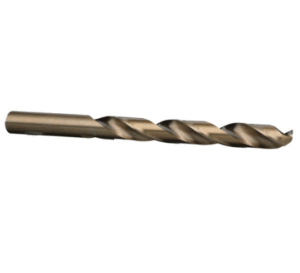Our Location
304 North Cardinal St.
Dorchester Center, MA 02124

THE FUNCTION OF TWIST DRILL BITS
Twist drill bits are among the most universally used cutting tools in modern manufacturing, construction, engineering, woodworking, metalworking, and DIY home improvement projects. Their widespread adoption comes from their ability to produce clean, straight, cylindrical holes in a wide range of materials, including metal, wood, plastic, composites, ceramics (with specially configured tips), and masonry (when fitted with carbide-tipped geometry). Understanding the function of twist drill bits requires analyzing their geometry, cutting mechanics, chip removal, material properties, coating technologies, performance under varying speeds and feed rates, and their compatibility with various drilling machines. Twist drill bits operate through a helical flute structure that guides chips away from the cutting edge, reduces friction, and stabilizes the drilling process. Their tip geometry, typically 118° or 135°, controls penetration rate, centering ability, heat distribution, and cutting efficiency. Twist drill bits fulfill essential roles across industrial sectors, allowing for the creation of holes for screws, rivets, bolts, dowels, fasteners, pipes, wiring channels, precision mechanical assemblies, and structural connections. Brands such as DEWALT (DW1354, DW1582), Bosch (BL21A, CO2135), Makita (D-47373), Milwaukee (48-89-4631), Irwin (3018002), Dormer Pramet A002, Guhring Series 552, and Yamawa SP Drill Series produce advanced models engineered for different drilling environments, from high-speed steel applications to cobalt drilling in hardened steel. In this comprehensive report, we will examine the function, principles, design, and application of twist drill bits in deep detail, exploring both fundamental theory and modern industrial practice.
THE BASIC FUNCTION OF TWIST DRILL BITS
Twist drill bits serve the fundamental function of creating a round hole by cutting through material using a rotating motion. Their helical flutes act as channels for chip evacuation, while the cutting lips carve material at the desired diameter. The bit converts rotational motion into a controlled cutting action that advances the tool deeper into the workpiece. Twist drill bits must simultaneously cut, break, lift, and eject material while maintaining dimensional accuracy. Their functions extend beyond simple hole-making: they also assist in pilot hole creation, countersinking (with modified designs), reaming (in high-precision variants), and spot drilling. Because twist drill bits are often used in automated machining centers, their secondary functions include heat dissipation, vibration control, self-centering, and maintaining consistent chip load during high-speed operation. Many modern twist drill bits use coatings such as titanium nitride (TiN), titanium carbonitride (TiCN), diamond-like carbon (DLC), and black oxide to enhance performance, reduce heat, and prevent premature dulling.

GEOMETRIC PRINCIPLES UNDERLYING THE FUNCTION OF TWIST DRILL BITS
The geometry of a twist drill bit determines its cutting behavior, efficiency, and performance across various materials. Geometry includes the point angle, helix angle, chisel edge, land width, clearance angle, and flute depth. A standard 118° point angle provides balanced cutting efficiency suitable for wood, soft metals, and plastics, while a 135° split-point angle is optimal for hardened steel and alloys, as it reduces wandering and lowers thrust force. The chisel edge at the center acts like a wedge that pushes material outward toward the cutting edges. Its job is not primarily cutting but displacing material so the cutting lips can remove it effectively. A typical high-helix design (35°–40°) improves chip evacuation, especially in aluminum and softer materials, while low-helix designs (20°–30°) are suited for harder materials that produce shorter chips. The lands stabilize the bit inside the hole, providing lateral support while reducing frictional contact. Twist drill bits also depend on proper margin spacing and flute polishing so that chips glide smoothly up the channel without clogging. Cobalt models such as DEWALT DW1263 or Bosch CO2135 incorporate split-point geometry to prevent walking on hard materials.
THE CUTTING MECHANISM OF TWIST DRILL BITS
Twist drill bits function through a multi-stage cutting mechanism involving material deformation, shear plane formation, chip segmentation, heat generation, and chip evacuation. As the drill rotates, the cutting edges shear material from the work surface. Shear stress builds until the material fractures along the shear plane. The chips then curl and are forced along the helical flute. Heat is produced at the cutting edge due to friction and plastic deformation, and it must be dissipated quickly to prevent tool wear. Most heat is carried away by the chips themselves, which means efficient chip evacuation is essential for tool longevity. Lubricants or coolants in metalworking reduce friction and improve cutting performance. Carbide-tipped drills, such as Milwaukee Shockwave Red Helix 48-89-2801, utilize highly wear-resistant carbide to maintain cutting sharpness in abrasive materials. High-speed steel (HSS) bits deform elastically during cutting, providing flexibility and reducing breakage risk. The function of the cutting edges also varies depending on whether the drill uses a standard grind, split-point grind, or self-centering architecture. Split-point geometries, found in models such as Makita D-47373 or Irwin 3018002 Cobalt M-35, reduce thrust force and enhance precision.
THE ROLE OF FLUTES IN TWIST DRILL BIT FUNCTION
The flutes of a twist drill bit play crucial roles in chip removal, cooling, lubrication distribution, and stabilizing the drilling process. Flute geometry must balance chip volume, depth, curvature, and surface finish. Too narrow flutes can choke chips and cause overheating; too wide flutes weaken the bit structurally. Flute polish and coating significantly influence performance. Black oxide coatings found in models like DEWALT DW1177 improve chip flow by reducing friction. A high-polish groove, common in Guhring Series 305 and Dormer A002, prevents chips from sticking during deep-hole drilling. Deep fluting is essential for softer materials that produce large, continuous chips, such as aluminum and certain plastics. Harder materials produce shorter chips that require stronger structural support, making shallower flutes more suitable. The helical structure also helps stabilize drill alignment, reducing bit wobble and improving hole straightness. In long-length drills such as Bosch BL2635 or DEWALT DW1610, helical flute reinforcement prevents vibration and bending.
MATERIALS USED IN TWIST DRILL BITS AND THEIR FUNCTIONAL IMPACT
Twist drill bits are manufactured in a range of materials including high-speed steel (HSS), cobalt alloys (M35 and M42), solid carbide, carbide-tipped steel, and specialty composites. Each material influences cutting performance, heat resistance, flexibility, and durability. High-speed steel (HSS) provides excellent toughness and is suitable for general-purpose drilling. It is commonly used in models such as Makita D-53842 and Bosch BL21A. Cobalt alloy bits (M35 or M42), like the Irwin 3018002 or DEWALT DW1263, offer superior heat resistance and are ideal for stainless steel and hardened alloys. Solid carbide bits, such as Guhring Series 551, deliver exceptional rigidity and wear resistance, making them suitable for CNC precision drilling but susceptible to breakage in handheld applications due to brittleness. Carbide-tipped masonry bits, such as Bosch HC2167, incorporate tungsten carbide inserts that maintain sharpness when drilling into concrete or brick. Titanium coatings (TiN, TiCN, TiAlN) enhance surface hardness and reduce friction. For example, Milwaukee 48-89-4631 uses titanium coating to increase lifespan in high-impact environments.
COMMON FUNCTIONS OF TWIST DRILL BITS IN METALWORKING
In metalworking industries, twist drill bits primarily function to create precise holes for machining operations, assembly, and fabrication. They prepare holes for tapping, counterboring, reaming, and threading. Twist drills allow high levels of dimensional accuracy, especially when used in drill presses or CNC machining centers. They also function in removing material for rivet holes in automotive, aerospace, and industrial manufacturing. Cobalt and carbide bits, such as Bosch CO2135 and Dormer A002, resist wear and thermal stress when drilling metals such as stainless steel, titanium, cast iron, tool steel, and nickel-based superalloys. The function of minimizing heat buildup is critical in metal drilling because high temperatures can anneal a bit’s cutting edge. Therefore, coolant channels or specialized coatings are used in industrial drill bits to optimize performance.
COMMON FUNCTIONS OF TWIST DRILL BITS IN WOODWORKING
In woodworking, twist drill bits function to create holes for screws, dowels, joinery, wiring passages, hinge installations, and furniture construction. Wood produces long, continuous chips, so twist bits used in woodworking typically have sharper cutting edges and wider flutes. Brands like Makita D-00965 and DEWALT DW1177 produce woodworking-oriented bit sets. Although brad-point bits are preferred for precision woodworking, standard twist drill bits remain widely used due to their versatility. They function effectively in softwoods, hardwoods, plywood, MDF, and laminated boards. Wood drilling requires speed control to prevent burning or splintering, and twist drill bits must maintain a clean cutting edge to create smooth holes.
COMMON FUNCTIONS OF TWIST DRILL BITS IN PLASTIC DRILLING
Plastic drilling requires twist drill bits with low cutting angles to prevent melting and excessive heat buildup. The function of the drill bit in plastic is to cut cleanly without creating stress cracks. Modified point geometries, such as 90° or 100°, are sometimes used. Brands like Guhring 552 and Bosch BL21A produce plastic-capable HSS bits. A slower feed rate and controlled RPM allow chips to evacuate without fusing to the material. Twist drill bits in this category prevent burr formation and ensure transparency in acrylic and polycarbonate drilling.
COMMON FUNCTIONS OF TWIST DRILL BITS IN MASONRY APPLICATIONS
Masonry drilling utilizes carbide-tipped twist drill bits engineered to withstand impact and abrasion. Their function is to fracture brittle materials using a combination of rotational and percussive forces. Bits such as Bosch HC2167, Makita D-00878, and Milwaukee 48-20-8852 use tungsten carbide inserts bonded to steel bodies. These bits perform in concrete, brick, stone, and mortar. Although the flute structure still removes dust particles, chip evacuation is less critical in masonry since material breaks apart rather than shears. Their durability and high heat resistance are essential for drilling in dense, abrasive materials.
DETAILED LIST OF TWIST DRILL BIT BRANDS AND MODELS
Below is a comprehensive, expanded list of major twist drill bit brands and representative model numbers:
DEWALT
DW1177 Black Oxide Set
DW1354 Titanium Pilot Point Set
DW1263 Cobalt Set
DW1610 Extra Long Bit
DW1582 Gold Ferrous Bits
Bosch
BL21A Black Oxide Series
CO2135 Cobalt M42 Bit
CO2143 Cobalt Jobber Bit
BL2635 Long-Length Bit
HC2167 Carbide-Tipped Masonry Bit
Makita
D-47373 HSS-Tin Coated Drill Set
D-00965 High-Speed Steel Set
D-00878 Carbide Masonry Bit
T-01725 Titanium Set
Milwaukee
48-89-4631 Titanium Red Helix
48-89-2801 Carbide Bit
48-89-9204 Cobalt Set
48-20-8852 SDS Masonry Bit
Irwin
3018002 Cobalt M35 Bit
Countersink & Drill Combo Set
HSS Turbomax Series
Guhring
Series 305 HSS Jobber Drills
Series 551 Solid Carbide Drills
Series 552 Hi-Performance Drills
Dormer Pramet
A002 Universal HSS Drill
A777 Carbide Drill
E500 HSS-E Split Point Drill
Yamawa
SP Series Precision Drills
UD Series Ultra-High Precision Bits